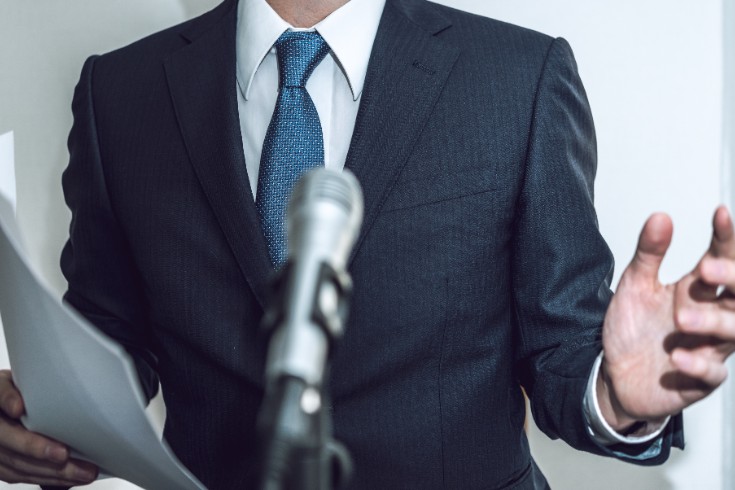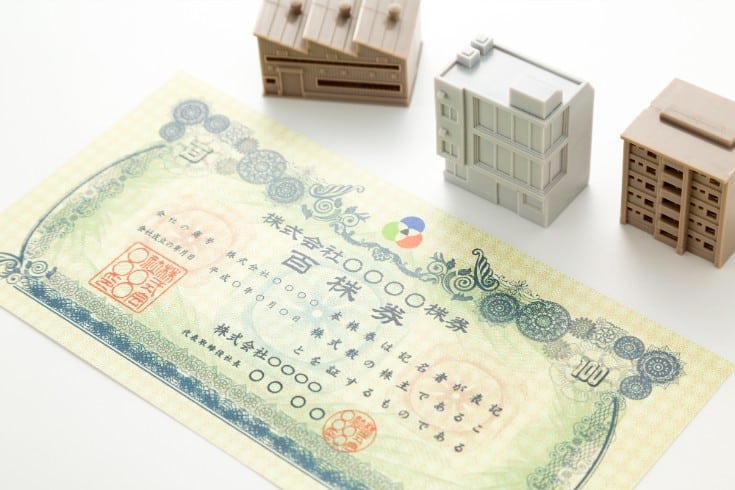Limitations of Rights under Japanese Copyright Law: Perspectives from Public Interest and Journalism

The Japanese Copyright Law aims to protect the rights of authors who create works and contribute to the development of culture. One of the significant features of this law is the adoption of the “formality-free principle.” This means that copyright arises automatically at the moment a work is created, without any need for registration or other procedures. This robust protection allows authors to secure the profits generated from their creative activities. However, copyright is not absolute, considering the interests of society as a whole and the fair use of culture. Under Japanese Copyright Law, there are detailed “limitations on rights” provisions that allow the use of copyrighted works without the author’s permission under specific circumstances. Unlike the comprehensive concept of “fair use” in the United States, these provisions are personalityized by the fact that the scenarios and purposes for which use is permitted are specifically defined in individual articles. For corporate public relations, media operations, and legal compliance, understanding these provisions accurately is essential to avoid the risk of copyright infringement and to conduct legitimate business activities. This article provides a professional perspective on the limitations on rights provisions that are particularly relevant to business practices, such as the reproduction of editorials on current affairs, the use of political speeches, reporting on current events, and duplication in legal proceedings, with specific articles and case law examples.
Reproduction of Editorials on Current Affairs Under Japanese Copyright Law
To foster social discourse, Japanese Copyright Law allows for the reproduction of editorial articles under specific conditions. Article 39, Paragraph 1 of the Japanese Copyright Law permits the reproduction or broadcasting of editorials on political, economic, or social current affairs that have been published in newspapers or magazines, in other newspapers or magazines.
For this provision to apply, several strict requirements must be met. Firstly, the work in question must have been “published in a newspaper or magazine.” Secondly, the content must be an editorial on “political, economic, or social current affairs.” It is crucial to understand the definition of ‘editorial’ here. It does not refer to mere reporting of facts or explanatory articles on current affairs. According to legal interpretation, an ‘editorial’ refers to expressions of the media organization’s principles and recommendations, such as a newspaper’s leading article or a magazine’s editorial.
Furthermore, there are clear exceptions to this provision. Editorials of an academic nature are excluded from this exception to protect the author’s professional insights and economic interests. The most practically important is when the original article includes a notice prohibiting reproduction, such as “reproduction prohibited.” Even if all other requirements are met, unauthorized reproduction is not allowed if this notice is present. Legally, this prohibition notice must be linked to each individual editorial, and a general notice included at the end of a magazine, for example, is insufficient.
The structure of this article reflects the legislative intent to prioritize the circulation of specific expressions that should be the subject of social debate, unless the author actively asserts their rights. In other words, it allows for the material to be used for public discussion by default, while reserving the right for the author to refuse its use with a simple procedure (prohibition notice). Additionally, Article 39, Paragraph 2 of the Japanese Copyright Law also permits the public transmission of legally broadcasted editorials using receiving devices (for example, playing a radio broadcast in a store). Even when such use is permitted, there is an obligation to clearly indicate the source.
Utilization of Political Speeches and Similar Discourse
To ensure the free flow of information that forms the foundation of a democratic society, Article 40 of the Japanese Copyright Law provides special provisions for the use of political speeches and similar discourse. This article delineates the scope of permissible use in two stages, depending on the type of speech, and behind this lies a clear judgment regarding the degree of public interest.
Firstly, the broadest use is permitted for political speeches and statements made in public, as well as public statements in judicial proceedings. According to Article 40, Paragraph 1 of the Japanese Copyright Law, these speeches and statements can be freely used “regardless of the method” in principle. This is based on the idea that responses in the Diet or arguments in court are public assets that members of society should have free access to and consider. However, there is one important limitation to this broad use: it does not apply when “editing the works of the same author for use.” This restriction is in place to prevent the unauthorized creation and commercial use of new works, such as collections of speeches by specific politicians or lawyers.
Secondly, more limited use is permitted for public speeches and statements made by national institutions or local public entities (those not included in the first category). Article 40, Paragraph 2 of the Japanese Copyright Law stipulates that these speeches and statements can be used in newspapers, magazines, or broadcasts, etc., only when deemed justifiable for the purposes of reporting. This provision anticipates, for example, explanations by officials at press conferences of government ministries and agencies. Here, the use is limited to the specific purpose of reporting, unlike the speeches of politicians.
Thus, Article 40 of the Japanese Copyright Law clearly distinguishes the degree of freedom of use based on the origin of the speech. Political speeches that are fundamental to national politics and statements in court that realize judicial justice are granted the highest degree of public interest, with no restrictions on the method of use. On the other hand, general speeches by administrative agencies are positioned as information that should be conveyed to the public through the filter of reporting. This demonstrates the law’s intricate distinction between the roles of public statements in society.
Utilization for Reporting Current Events
To accurately report on current events, it is sometimes essential to use works related to the incident. For example, conveying the gravity of an art theft without using images of the stolen artwork can be challenging. To address such situations, Article 41 of the Japanese Copyright Law stipulates that “in cases of reporting on current events, works that constitute the incident or are seen or heard in the course of the incident may be used within the scope deemed legitimate for the purpose of reporting.”
The interpretation of this article, especially the scope of “reporting” in the digital age, has been clarified by recent court decisions. By examining two contrasting cases, we can better understand its application.
The first case is one where the use was deemed lawful “reporting” (Tokyo District Court decision, March 30, 2023 (2023)). In this incident, a photographer claimed that his photo was posted on a website without permission. However, the website was reporting on a separate copyright infringement lawsuit in which the photo itself was a point of contention. The court recognized this lawsuit judgment as a socially significant “current event” and determined that the photo was a core element constituting the incident. Therefore, posting the photo was necessary to accurately convey the event and was considered use within the “legitimate scope for the purpose of reporting.” This judgment suggests that even if the user is not a traditional news organization, Article 41 can apply if the content objectively communicates a social event, fulfilling the function of “reporting.”
The second case is one where the use was not considered “reporting” (Tokyo District Court decision, February 28, 2023 (2023)). In this incident, a still image from a video posted on a private Instagram account was uploaded without permission as information for a dental clinic on Google Maps. The uploader claimed the purpose was to “report” on a medical issue where a dentist left during a patient’s treatment. However, the court rejected this claim. The reasons included the lack of clarity about when and in what context the event occurred based on the image alone, the image’s lack of newsworthiness, and the fact that posting on Google Maps did not constitute the act of “reporting” as it did not convey information to society.
These court decisions indicate that the application of Article 41 of the Japanese Copyright Law tends to focus more on the function of the act (whether it objectively reports on a social event) and the manner of use (such as the nature of the platform) rather than the user’s status (whether a news organization or an individual). Additionally, it is prohibited under Article 49, Paragraph 1, Item 1 of the Japanese Copyright Law to use reproductions created under this provision for purposes other than reporting (for example, commercializing and selling a photo used in reporting).
Reproduction in Judicial Procedures Under Japanese Law
The Copyright Act in Japan has special provisions that limit rights to prevent hindrance to the fundamental functions of the state, such as judiciary, legislation, and administration. These provisions are crucial mechanisms designed to balance the interests of copyright holders with the necessity of public interest use.
Firstly, regarding the use of copyrighted works in judicial procedures, Article 41-2 of the Japanese Copyright Act allows for the reproduction of copyrighted works to the extent necessary for the proceedings. This includes submitting copyrighted works as evidence in litigation or copying prior art documents during patent examination processes. Recent legal amendments have adapted to the digitalization of judicial and administrative procedures, expanding the allowance from mere “reproduction” to include “public transmission” such as electronic file sharing.
Next, for legislative and administrative purposes, Article 42 of the Japanese Copyright Act stipulates that copyrighted works can be reproduced to the extent deemed necessary for “legislative or administrative purposes as internal materials.” A key point of this provision is that the use is limited to “internal materials.” Therefore, reproductions made under this provision cannot be widely published or distributed to the public without falling outside the intended purpose.
Common to these public interest use provisions is an important caveat: even if the purpose is legitimate, it does not apply “if the nature and purpose of the copyrighted work, as well as the number and manner of reproductions, unjustly harm the interests of the copyright holder.” This functions as a sort of safety valve in the application of rights limitation provisions. For example, if an administrative agency copies an entire expensive market research report for organization-wide use instead of copying a portion for internal review, it could be deemed as “unjustly harming the interests of the copyright holder” by taking away market sales opportunities. This clause clarifies that even if the use is for a public interest, it cannot limit rights if it directly competes with the copyright holder’s market and significantly harms their economic interests. This ensures a balance between the smooth execution of state functions and the legitimate economic interests of copyright holders.
Utilization of Translation and Adaptation under Various Copyright Limitations in Japan
When utilizing copyrighted works based on the rights limitation provisions we have previously explained, to what extent is it permitted to translate or summarize these works? Article 47-6 of the Japanese Copyright Law clarifies the scope of such secondary use. This provision does not create new limitations on rights but rather clarifies what secondary uses are permissible in conjunction with other rights limitation provisions.
The Japanese Copyright Law distinguishes between types of secondary use as “translation” and “adaptation” (which includes arrangement, transformation, and adaptation), and strictly differentiates the permissible scope according to the purpose of the original rights limitation provision.
For instance, in cases where use is limited to a specific scope, such as personal use (under Japanese Copyright Law Article 30) or use in school education (under the same law Article 35), not only is translation of the work permitted, but also arrangement, transformation, and adaptation.
On the other hand, for uses of high public interest that we have discussed in this article, such as reproduction of editorials on current issues (under the same law Article 39), use of speeches for reporting purposes (under the same law Article 40, Paragraph 2), reporting on current events (under the same law Article 41), and reproduction for judicial and administrative proceedings (under the same law Articles 41-2 and 42), the permissible secondary use is limited to “translation” only. In these contexts, it is crucial to convey the content of the work accurately, and “adaptation,” which alters the expression of the author’s thoughts or emotions, is generally not permitted. This is because maintaining the identity of the original work’s expression and ensuring accuracy align with the intent of these rights limitation provisions. However, there are precedents where summarizing within the scope of quotation, faithful to the purpose, is allowed, but this is an area that requires careful judgment.
To clarify this relationship, the following table is provided.
| Provision Basis | Main Purpose of Use | Permissible Secondary Use |
|---|---|---|
| Japanese Copyright Law Article 39 | Reproduction of editorials on current issues, etc. | Translation only |
| Japanese Copyright Law Article 40, Paragraph 2 | Use of speeches for reporting purposes | Translation only |
| Japanese Copyright Law Article 41 | Reporting on current events | Translation only |
| Japanese Copyright Law Articles 41-2 and 42 | Judicial and administrative proceedings | Translation only |
| (Comparison) Japanese Copyright Law Article 35 | Use in school education | Translation, arrangement, transformation, adaptation |
Thus, the Japanese Copyright Law protects the integrity of the expression of works as an important value, and intervention in the right to adapt, which is the right to alter works, is treated more cautiously than intervention in the right to translate. This systematic rule reflects a sophisticated balance between fair use and the protection of the moral rights of authors.
Summary
As outlined in this article, rather than establishing a comprehensive fair use provision, Japanese Copyright Law sets forth numerous specific articles that limit the rights of copyright holders for certain purposes such as public interest and freedom of the press. The reproduction of editorials on current issues (Article 39) promotes public debate, and the use of political speeches (Article 40) ensures transparency in the democratic process. Moreover, the provisions concerning the reporting of current events (Article 41) adopt a modern interpretation that focuses on the functionality of the act as ‘reporting’ rather than the user’s identity, and the use in legal proceedings (Articles 41-2 and 42) incorporates an important balancing mechanism that ‘does not unfairly harm the interests of the copyright holder.’ Additionally, secondary uses associated with these utilizations (Article 43) are governed by intricate rules, such as allowing only translations in accordance with the original provision’s purpose. With the advancement of digital technology, the interpretation of these provisions is constantly changing, and it is essential to keep a close eye on the latest trends in case law. A high level of specialized knowledge is required to accurately understand these complex provisions and to apply them appropriately in the business field.
Monolith Law Office has a wealth of experience in providing legal services to a diverse range of domestic and international clients on issues related to Japanese Copyright Law. Our firm employs several English-speaking attorneys with foreign legal qualifications, enabling us to provide precise support for companies conducting international business to understand and comply with Japan’s complex legal system. If you need consultation on the themes discussed in this article or legal advice on specific cases, please do not hesitate to contact our firm.
Category: General Corporate





















